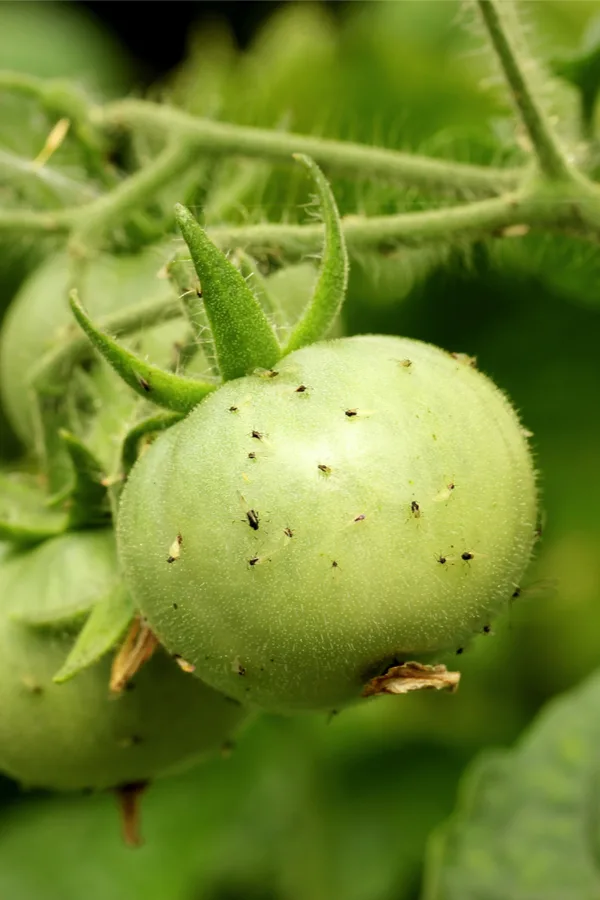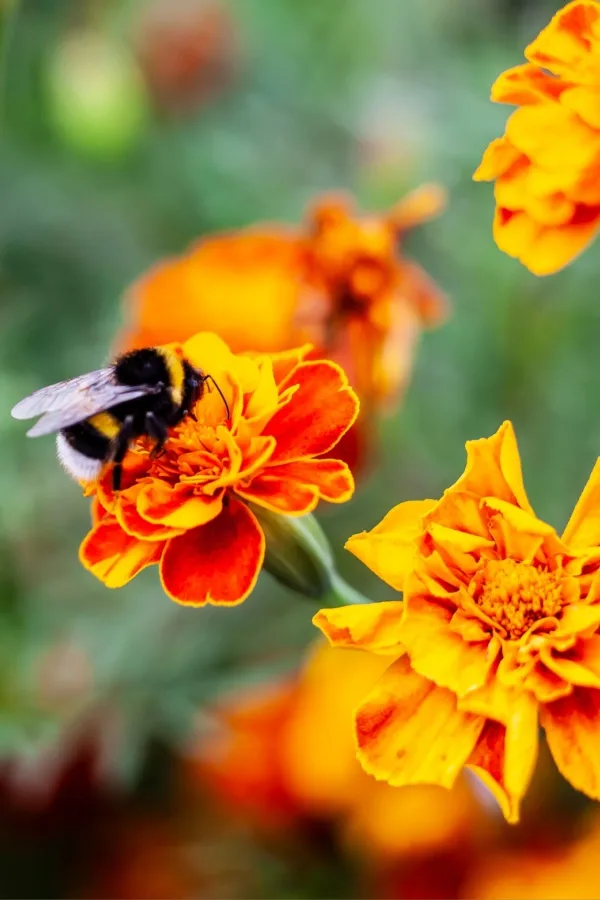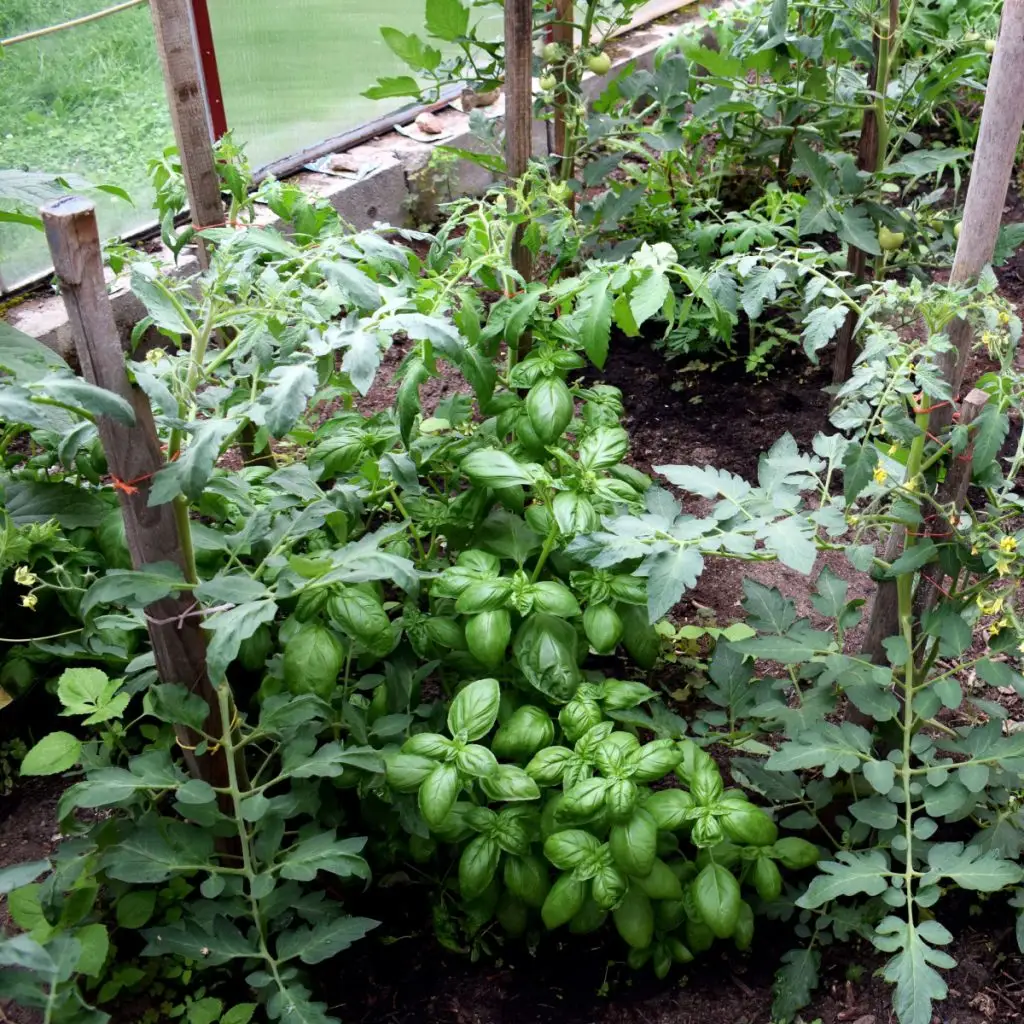Looking for a few of the best companion plants to grow alongside your tomatoes this year?
One of the best ways to help your tomato plants perform better is to grow other plants near them that help them out – a practice known as companion planting. Not only can companion planting protect and power a tomato crop to bigger, more tastier yields, it can also help bring color, beauty and amazing scents to your garden space as well!
So what exactly is companion planting? In a nutshell, it’s the process of taking advantage of the beneficial relationships that can exist between different varieties of plants by planting them near one another.

For example, beans and peas are wonderful for growing with corn. Why? Because as beans and peas grow, they help to fix nitrogen availability in the soil. Nitrogen that is much needed by corn to reach its full potential. But at the same time, corn can provide a natural trellis for the peas or beans to climb on, flower and produce.
Companion plants exist for nearly all vegetable plants and flowers. And it can work both ways. There are also some varieties of plants that can hurt another plant when growing nearby. For instance, corn should never be planted near tomatoes. Both are heavy nitrogen feeders and will compete with each other for nutrients.
The Best Companion Plants For Tomatoes – And Why They Work!
How Companion Planting Helps Tomatoes
Of all the vegetable plants that can go into a garden, tomatoes are at the top of the list when it comes to benefiting from companion planting.
Tomato plants can suffer quite easily from disease and attacks from pests. In fact, tomatoes are the prime target for a myriad of insect problems and plant health issues. For starters, you have the tomato hornworm, which can decimate a plant seemingly overnight.
There are also aphids, cutworms, nematodes and a long list of other pests waiting to attack as well. Unfortunately, plants that fall victim to pests then become even more susceptible to disease. A weak plant is an easy target as it doesn’t have the strength to fight off attacks.

It is a vicious cycle that for tomatoes, can cause poor health and lead to low yields. But luckily, that is exactly where companion planting can step in and come to the rescue!
As you will see below, there all all kinds of plants that can help benefit tomatoes. Most help with providing natural protection from pests. Meanwhile, others aid in defending against pests, all while actually improving the flavor of your tomatoes as well.
Best of all – all the beneficial plants below can grow by simply seeding a few seeds around your tomato plants after planting. Talk about an easy, all-natural way to grow better tomatoes. Here is a look at all five, starting with the best of the best, zinnias!
1. Why Zinnias Are Great For Tomatoes
Want big color in your garden and great pest protection? Then planting zinnias will do the trick! Zinnias are one of the best companion plants of all when it comes to adding beauty and protection for tomatoes. In fact, many old-school gardeners still seed them as a border around their entire garden. Not only to help deter pests, but to create a beautiful ring of color.
Zinnias are great for defending against tomato worms. But they also help attract predatory wasps, which are the mortal enemy of tomato and tobacco worms. Even better, they attract lady bugs as well, which in turn keeps the aphid and white fly populations in check.

The best part, zinnias can be direct seeded. They also germinate extremely fast. The flowers can be cut to keep plants blooming all season long – and those cut flowers are perfect for filling your home with big flower power! Affiliate Seed Link: Zinnia Multi Variety Seed Pack
2. The Power Of Marigolds
Marigolds are another incredible companion plant to grow in the garden. And that is especially true when growing near tomato pants! The pungent scent of marigolds does wonders for keeping an entire host of garden pests at bay, including nematodes, white flies and aphids.
Nematodes can be terribly destructive to tomato plants. They can suck the life out of tomatoes as they feed off the plant’s roots in the soil. But marigolds can stop that issue quickly. Nematodes can’t stand the scent and chemical markers of marigolds. By planting just a few marigold plants among your tomato plants, you can eliminate the nematode issue entirely.
Marigolds also bring big blooms and color to your garden. Not only do they add beauty, those blooms also bring in a long list of pollinators that help the flowers on all of your vegetable plants turn into luscious fruit.
The Ease Of Planting Marigolds
The real beauty of marigolds is that they are among the easiest seeds of any annual flower to scatter. They germinate fast without much need for watering or care. If the soil is warm enough, they can actually germinate in as little as just five days after planting.
Best of all, they can then produce flowers in four to five weeks, just as the tomatoes begin to flower themselves. See our article: The Best Marigolds To Grow To Repel Pests, Attract Pollinators – And Add Big Color!

Marigolds pungent scent helps deter other big tomato pests as well, such as tomato hornworms, squash bugs and cabbage worms. They can even be offensive to rabbits, deer and squirrels too. To plant, simply sow seed 1/8 deep in the soil and water in! Affiliate Seed Link: French Marigold Seeds
3. Why Basil Is One Of The Best Companion Plants For Tomatoes
Basil is another wonderful choice for companion planting with tomatoes. This is one case where the harvest from two plants pair just as well in the kitchen as the plants do while growing in the garden!
Basil helps to deter an army of common tomato pests when planted near tomato plants. That includes white flies, aphids and the dreaded tomato hornworm. But even better, mosquitoes and the common house fly are not fond of basil’s oily foliage or distinct scent either.
That means being able to work in the garden and water and harvest your tomatoes with a little less worry of being bitten. But perhaps best of all, basil also is said to improve the flavor of tomatoes when growing in close proximity to tomato plants. In fact, many restaurant chefs request this from growers and swear by it.
Basil seed can go in the ground at the same time as you are planting your tomato transplants. Simply scatter a few seeds around each plant and allow them to grow in harmony. Affiliate Seed Link : Sweet Basil Seeds

4. How Sunflowers Can Help Tomatoes
Not only can sunflowers bring amazing beauty and interest to your vegetable garden space, they can also help protect tomatoes like nobody’s business!
More than anything else, sunflowers help repel aphids and are also known to keep white flies away. Both happen to be more than a nemesis to tomatoes. By simply planting sunflowers within a few feet of your tomato crop, you can help protect your plants with ease. Affiliate Seed Link : Sunflower Seed Assortment
Even better, you are then rewarded in late summer with gorgeous seed heads from your sunflowers. Not only are they good for roasting and eating, they also make great cut flowers – or prime food for bird feeders.
Here is to planting some of the best companion plants for your tomatoes this year – and to having your best crop of tomatoes ever!
This Is My Garden
Follow Our Facebook Page For Great Gardening Tips And Advice! This Is My Garden Facebook Page
This Is My Garden is a garden website created by gardeners, for gardeners. Jim and Mary Competti have been writing gardening, DIY and recipe articles and books and speaking for over 15 years from their 46 acre Ohio farm. They publish three articles every week, 52 weeks a year. Sign up today to follow via email, or follow along!
